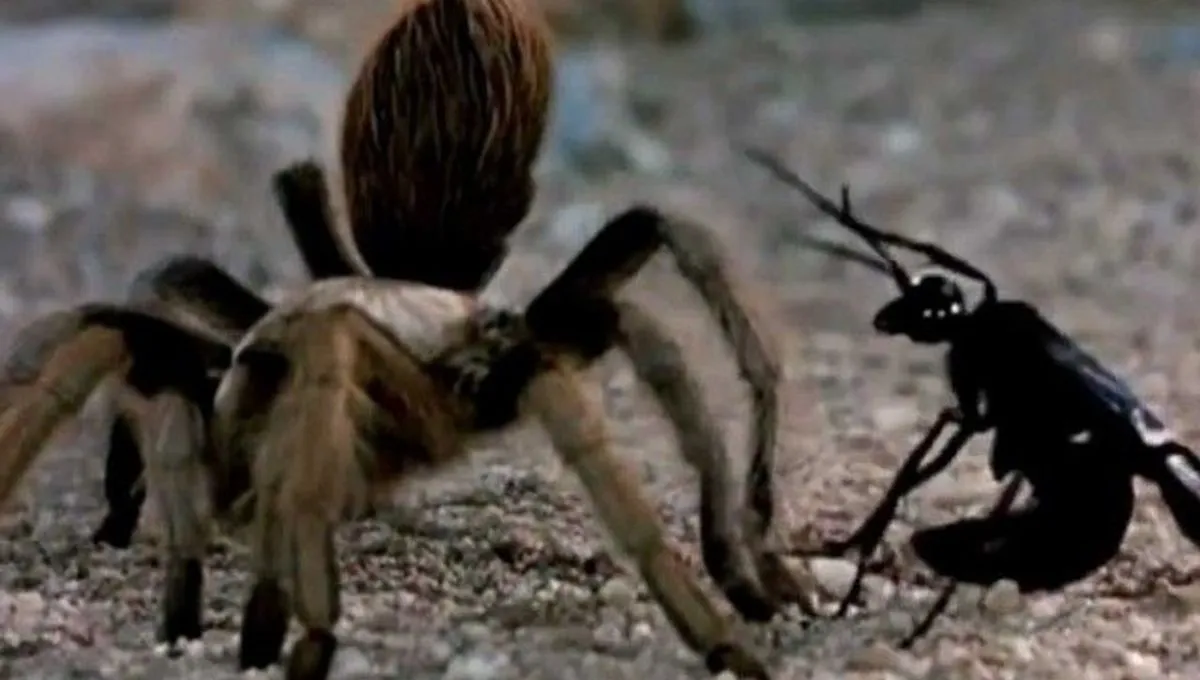Spider Wasp vs Tarantula The Deadly Encounter
The natural world is filled with dramatic struggles for survival, and few are as captivating or terrifying as the showdown between the spider wasp and the tarantula. This isn’t a quick battle; it’s a meticulously planned, brutal encounter showcasing the raw power and unique strategies of two of nature’s most formidable creatures. This blog post delves into the fascinating details of this predator-prey relationship, exploring the characteristics of both the spider wasp and the tarantula, and highlighting five key facts that make this encounter so extraordinary. Prepare to be amazed by the intricate dance of survival that plays out in the wild. The spider wasp, with its potent venom and strategic hunting, is a true marvel of the insect world, while the tarantula, a giant among spiders, is no easy target. Understanding their interactions provides insights into evolution, adaptation, and the delicate balance of ecosystems.
The Spider Wasp What Is It
Spider wasps are a family of solitary wasps known for their specialized hunting behavior targeting spiders, particularly tarantulas. They are not social insects like bees or hornets; instead, each female wasp works alone to provide for her offspring. Their life cycle is intricately tied to the tarantula’s, showcasing a remarkable example of predator-prey interaction. Their appearance and hunting strategies are uniquely adapted to this purpose. They are found in various regions around the world, each species tailored to the specific tarantula species found in their habitat.
Appearance and Characteristics
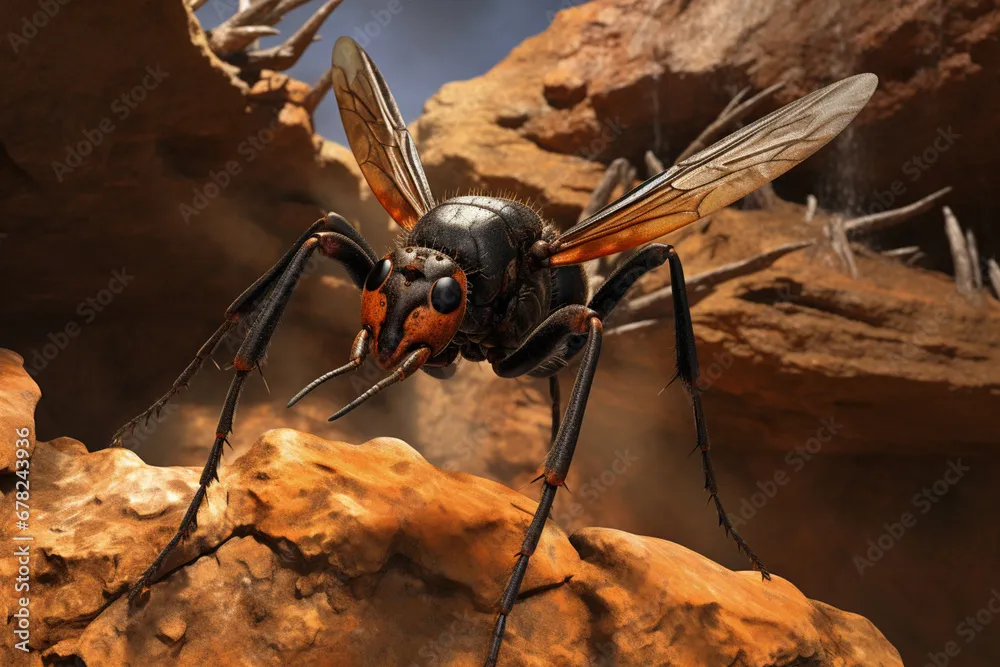
Spider wasps are typically slender with a striking appearance. They come in various colors, often metallic blues, blacks, or oranges, depending on the species. Their wings are transparent or smoky. They possess long, powerful legs and strong mandibles used for digging and manipulating their prey. A notable characteristic is their formidable stinger, used to inject paralyzing venom into the tarantula. The size of the spider wasp varies, but some species can be quite large, further emphasizing their hunting prowess. Their physical attributes are perfectly suited to their hunting lifestyle, allowing them to effectively target and subdue their much larger prey.
Habitat and Distribution
Spider wasps are found worldwide, especially in warmer climates. Their habitats align with those of the tarantulas they hunt. They can be found in deserts, grasslands, and tropical environments. They construct nests in burrows, hollows, or crevices, often near tarantula habitats. The distribution of specific spider wasp species varies, with some being endemic to certain regions, while others are more widespread. The presence of spider wasps often indicates a healthy ecosystem with an abundance of tarantula populations.
The Tarantula A Giant Prey
Tarantulas, large, hairy spiders, are among the spider wasp’s primary targets. These spiders are known for their size, diverse species, and habitats. The battle between these two creatures is a testament to nature’s balance, where each has developed specific adaptations to survive. Tarantulas are not only large but also possess defensive mechanisms, making the spider wasp’s hunting strategy even more remarkable. Their survival is often threatened by the cunning and deadly spider wasp, adding a layer of drama to their lives.
Tarantula Species and Habitats
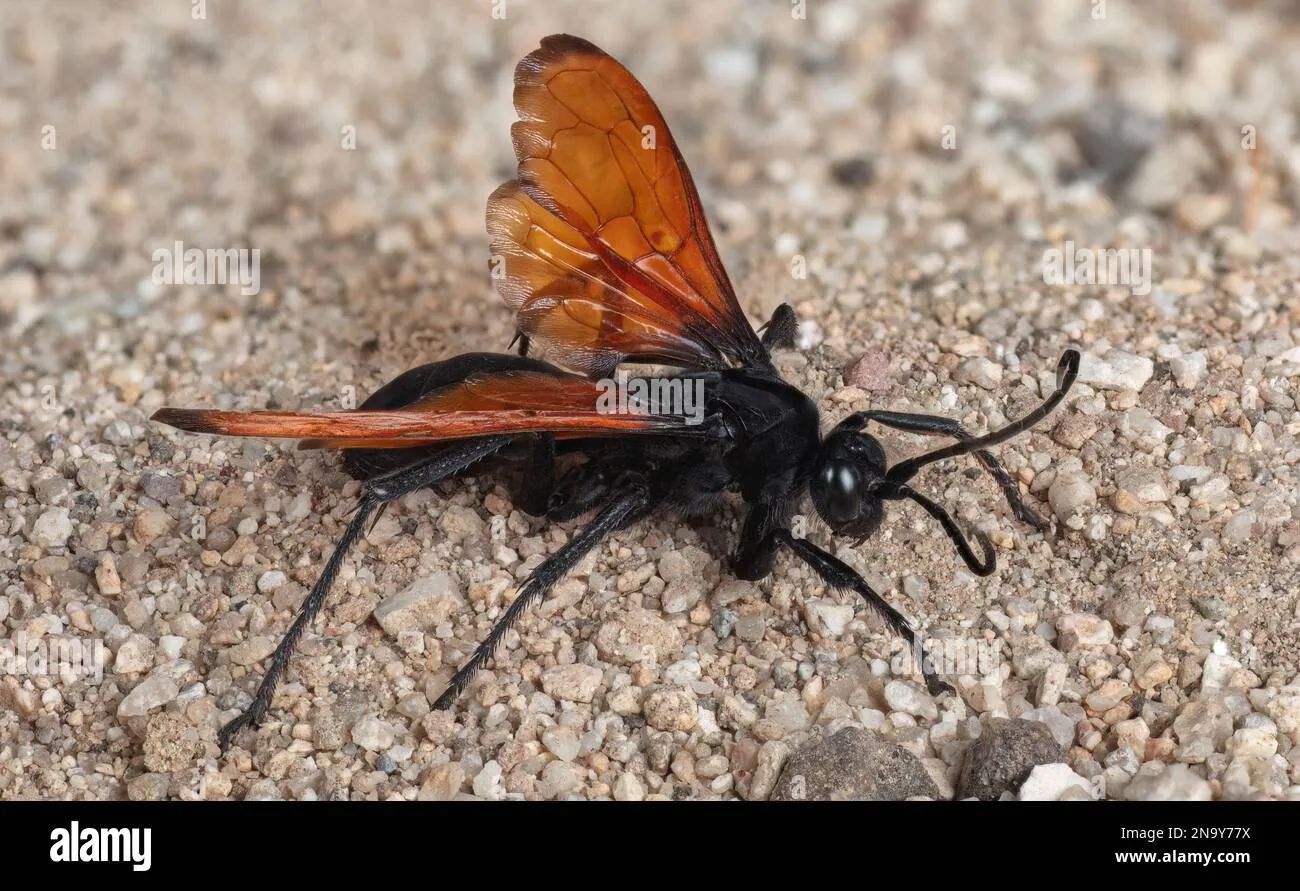
Tarantulas are found across the globe, with hundreds of different species inhabiting diverse environments, from tropical rainforests to arid deserts. Their sizes range from small, palm-sized spiders to larger species. Their habitats vary depending on the species, with some living in burrows, under rocks, or among vegetation. Tarantulas are nocturnal hunters, preying on insects, small reptiles, and sometimes even small mammals. Their adaptability and resilience make them formidable creatures, although still vulnerable to the spider wasp’s attack. The specific tarantula species in a region determines the corresponding spider wasp species that will hunt them.
Tarantula’s Natural Defenses
Tarantulas are not defenseless; they have several defense mechanisms against predators. They have urticating hairs on their abdomen, which they flick at threats, causing irritation. They also have strong fangs and can deliver a painful bite. Some species can run very fast. However, these defenses are not always effective against the spider wasp’s strategy. The spider wasp’s ability to paralyze the tarantula with its venom is the ultimate countermeasure. The battle is often determined by the wasp’s ability to evade the spider’s defenses and deliver a precise sting.
Top 5 Facts Spider Wasp vs Tarantula
Fact 1 The Sting
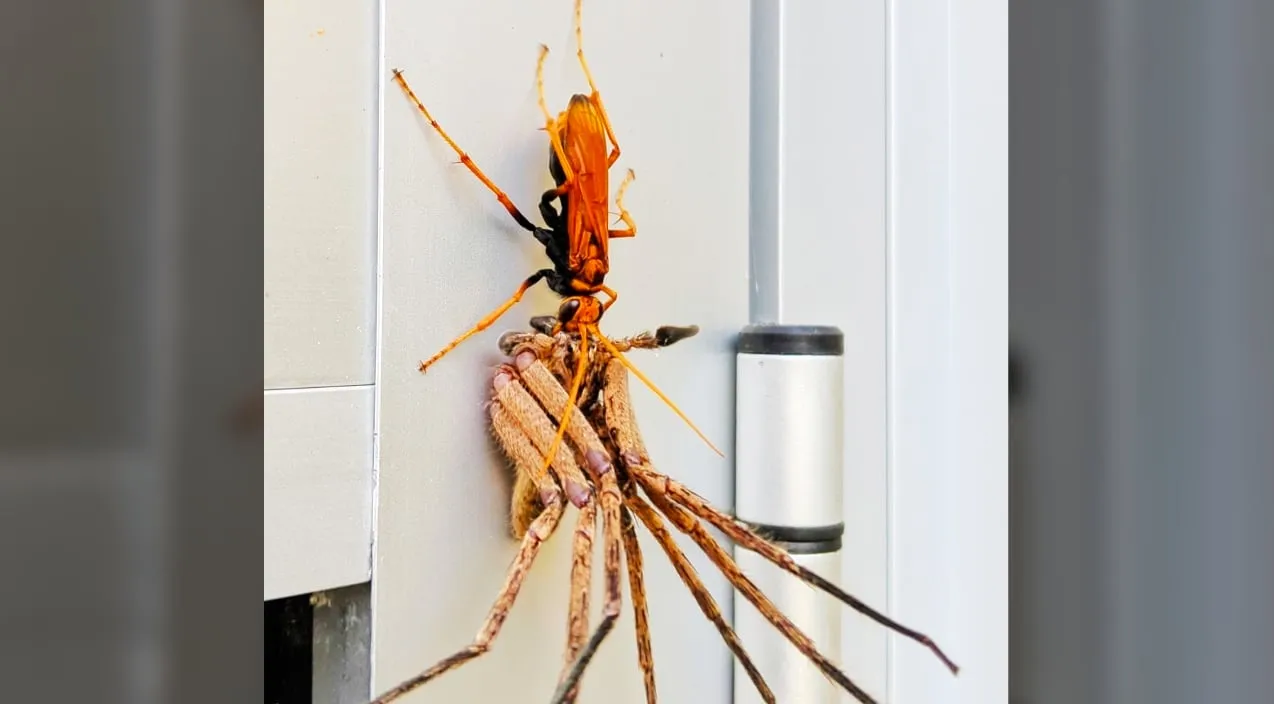
The spider wasp’s sting is its primary weapon. It injects venom directly into the tarantula’s nervous system. The venom contains a neurotoxin that causes paralysis, immobilizing the giant spider. The precision and speed of the sting are crucial, as they allow the wasp to subdue a creature many times its size. The sting is carefully placed, often on a specific nerve cluster, to maximize the effect. This allows the wasp to control the tarantula and prepare it for the next stage.
Fact 2 The Paralysis
Once stung, the tarantula becomes paralyzed but remains alive. The paralysis allows the spider wasp to safely drag the spider to a pre-prepared burrow or nest. This paralysis is critical because it prevents the tarantula from fighting back. The wasp meticulously maneuvers the immobile spider, often dragging it across significant distances. The duration of the paralysis can last for weeks, providing the wasp with ample time to complete its task.
Fact 3 The Burial
After paralyzing the tarantula, the spider wasp drags it to a pre-prepared nest or burrow. This is often an existing burrow or a tunnel dug specifically for this purpose. The wasp carefully positions the tarantula within the nest, preparing it to serve as a food source for her offspring. The burial process is a feat of strength and precision, often requiring the wasp to navigate difficult terrain. The location is chosen to protect the tarantula and the wasp’s eggs from other predators and the elements.
Fact 4 The Egg Laying
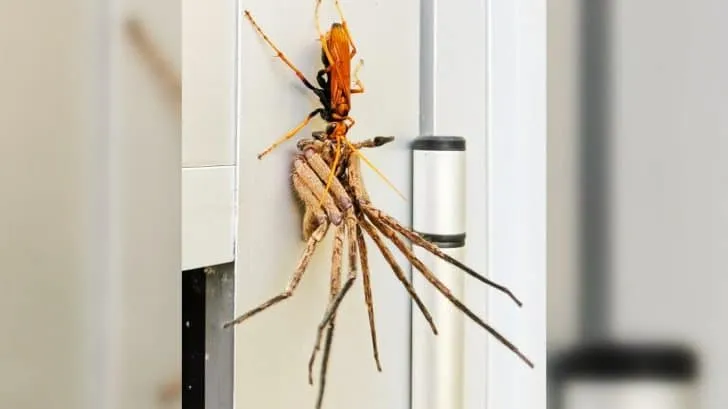
The spider wasp lays a single egg on the paralyzed tarantula. The egg is carefully placed, usually on the spider’s abdomen. This ensures that the larva will have access to the tarantula as a food source upon hatching. The wasp carefully selects a suitable spot for the egg, maximizing the chances of the larva’s survival. The egg is small, yet it represents the future of the spider wasp, all dependent on the successful completion of the cycle.
Fact 5 The Hatching
Once the egg hatches, the larva begins to feed on the paralyzed tarantula. The larva consumes the spider alive, starting with non-essential parts to keep the tarantula fresh for as long as possible. The larva grows and molts within the tarantula’s body, eventually consuming the entire spider. The hatching and development of the larva are a slow, deliberate process, mirroring the initial paralysis of the tarantula. This ensures the spider wasp’s offspring have a safe, reliable, and abundant food source.
The Spider Wasp’s Hunting Strategy
The spider wasp’s hunting strategy is a complex process involving several steps. From locating the tarantula to preparing the tomb, each action is carefully planned and executed. Their success depends on a combination of stealth, precision, and the potency of their venom. It’s a fascinating example of how natural selection has led to the development of specialized hunting behaviors.
Locating the Tarantula
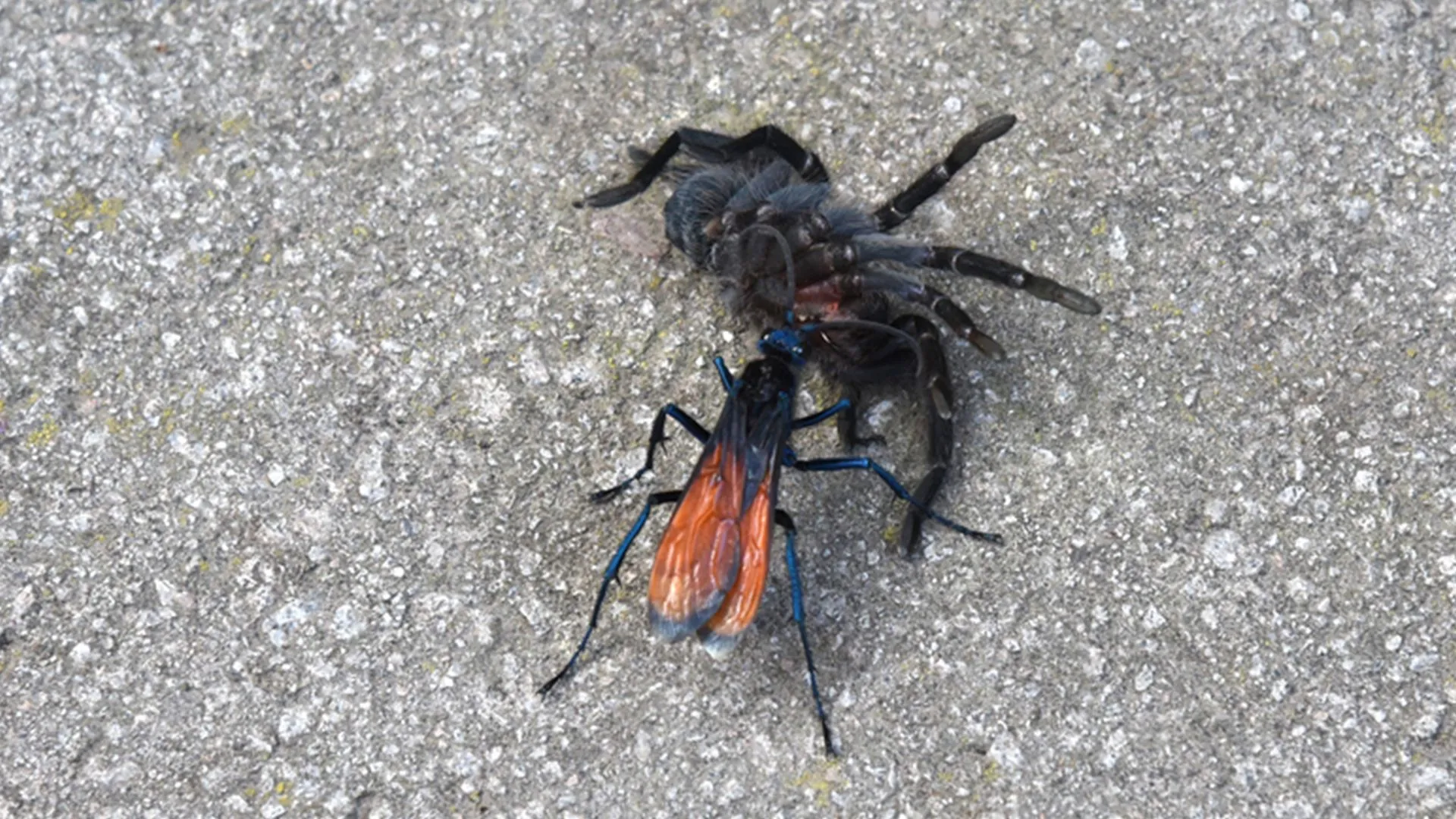
The spider wasp starts by locating a tarantula. They use a combination of visual cues and possibly other sensory methods, such as detecting vibrations or chemical signals, to find their prey. They may actively search or wait near tarantula burrows. Their ability to pinpoint the spider’s location is essential for the subsequent stages of their hunting plan. Spider wasps exhibit remarkable skill in finding their targets. Their survival depends on this ability.
The Stinging Process
Once the tarantula is located, the spider wasp initiates the stinging process. This involves a direct confrontation where the wasp attempts to sting the spider, often on its underside. The stinger is used to inject venom that paralyzes the tarantula. The wasp’s agility and the potency of its venom are crucial for a successful hunt. The process is a high-stakes encounter, often involving a struggle between the predator and prey, with the wasp aiming for a precise sting to ensure paralysis.
Preparing the Tarantula’s Tomb
After paralyzing the tarantula, the spider wasp drags it to a prepared nest or burrow, where it will serve as a food source for the wasp’s larva. The nest may be a pre-existing burrow or a carefully constructed chamber. The wasp may need to move the tarantula across difficult terrain. The preparation of the tomb is a crucial step, ensuring the survival of the wasp’s offspring by providing a safe environment and a readily available food supply. It is a testament to the wasp’s dedication to its progeny.
Conclusion
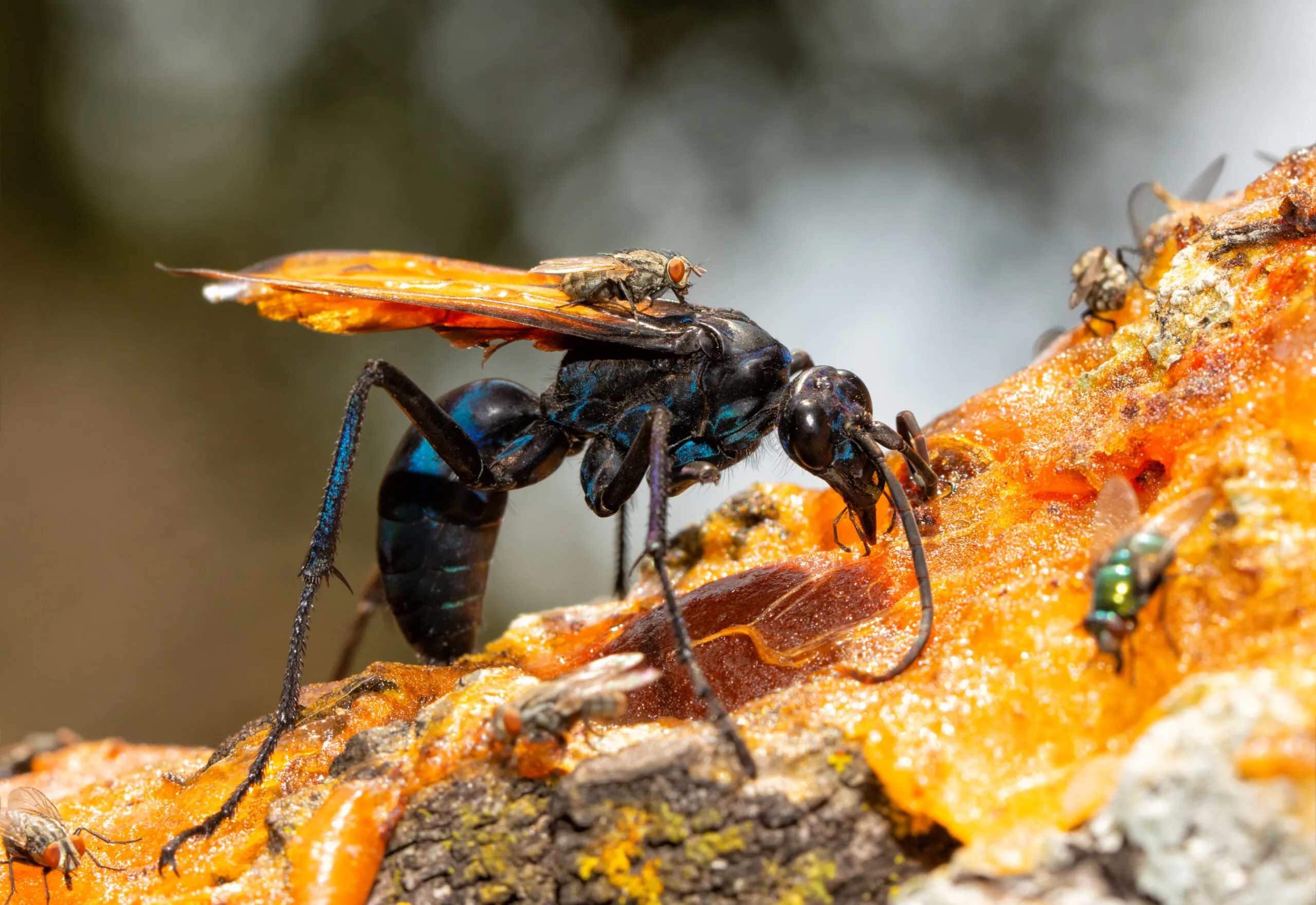
The encounter between the spider wasp and the tarantula is a remarkable example of natural selection and the intricate relationships that exist within ecosystems. From the strategic sting to the gruesome feast of the larva, every stage of this predator-prey interaction is a testament to the power and complexity of the natural world. Understanding this relationship gives us insight into the adaptations of both creatures and the delicate balance that sustains life. The spider wasp, a solitary hunter, and the tarantula, a giant spider, represent the extremes of their respective worlds, and their interactions paint a vivid picture of life and death in the wild. These encounters highlight the brutal beauty of nature, a continuous struggle for survival, and the wonder of the natural world.
